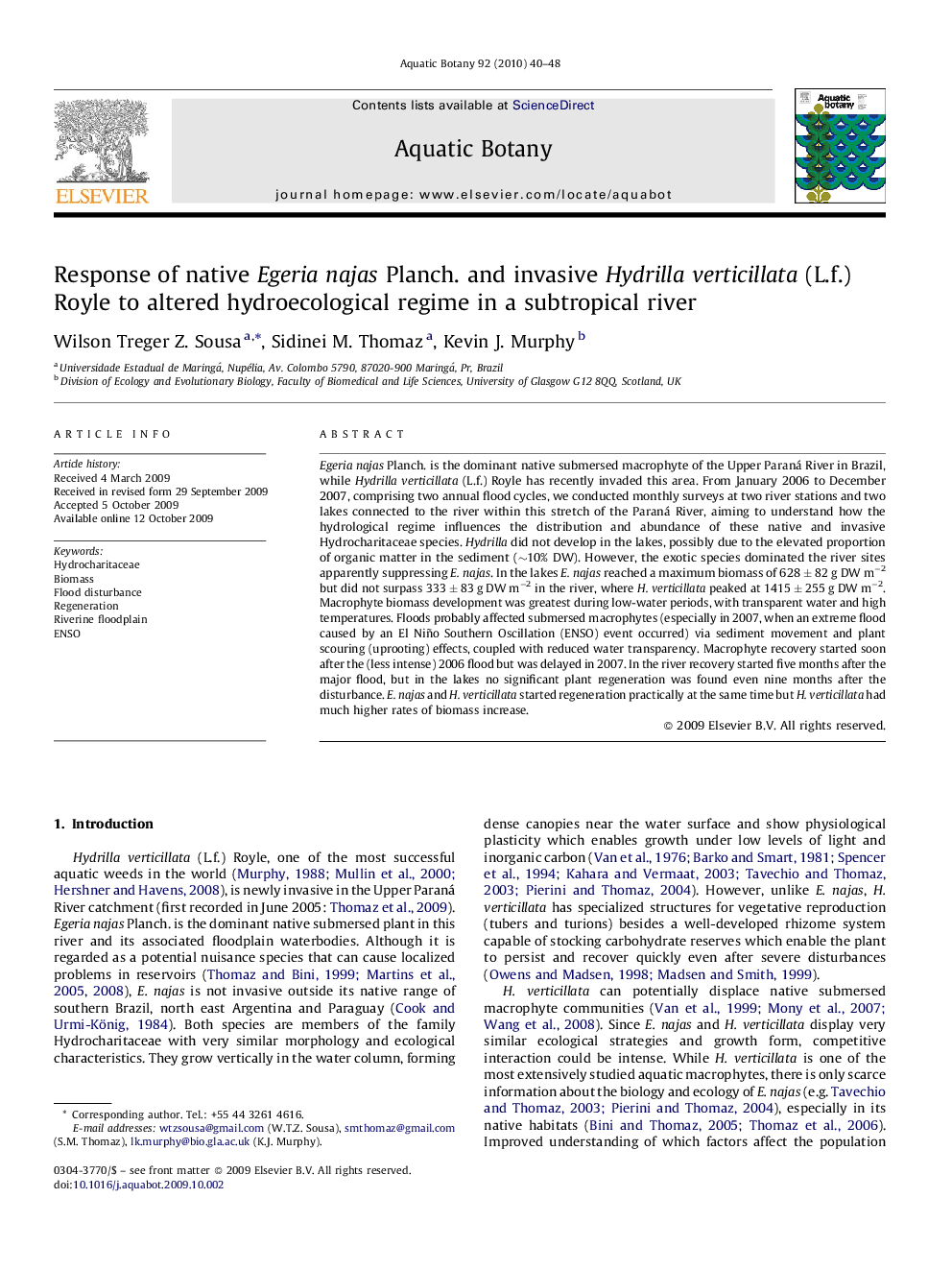| Article ID | Journal | Published Year | Pages | File Type |
|---|---|---|---|---|
| 4528358 | Aquatic Botany | 2010 | 9 Pages |
Egeria najas Planch. is the dominant native submersed macrophyte of the Upper Paraná River in Brazil, while Hydrilla verticillata (L.f.) Royle has recently invaded this area. From January 2006 to December 2007, comprising two annual flood cycles, we conducted monthly surveys at two river stations and two lakes connected to the river within this stretch of the Paraná River, aiming to understand how the hydrological regime influences the distribution and abundance of these native and invasive Hydrocharitaceae species. Hydrilla did not develop in the lakes, possibly due to the elevated proportion of organic matter in the sediment (∼10% DW). However, the exotic species dominated the river sites apparently suppressing E. najas. In the lakes E. najas reached a maximum biomass of 628 ± 82 g DW m−2 but did not surpass 333 ± 83 g DW m−2 in the river, where H. verticillata peaked at 1415 ± 255 g DW m−2. Macrophyte biomass development was greatest during low-water periods, with transparent water and high temperatures. Floods probably affected submersed macrophytes (especially in 2007, when an extreme flood caused by an El Niño Southern Oscillation (ENSO) event occurred) via sediment movement and plant scouring (uprooting) effects, coupled with reduced water transparency. Macrophyte recovery started soon after the (less intense) 2006 flood but was delayed in 2007. In the river recovery started five months after the major flood, but in the lakes no significant plant regeneration was found even nine months after the disturbance. E. najas and H. verticillata started regeneration practically at the same time but H. verticillata had much higher rates of biomass increase.
